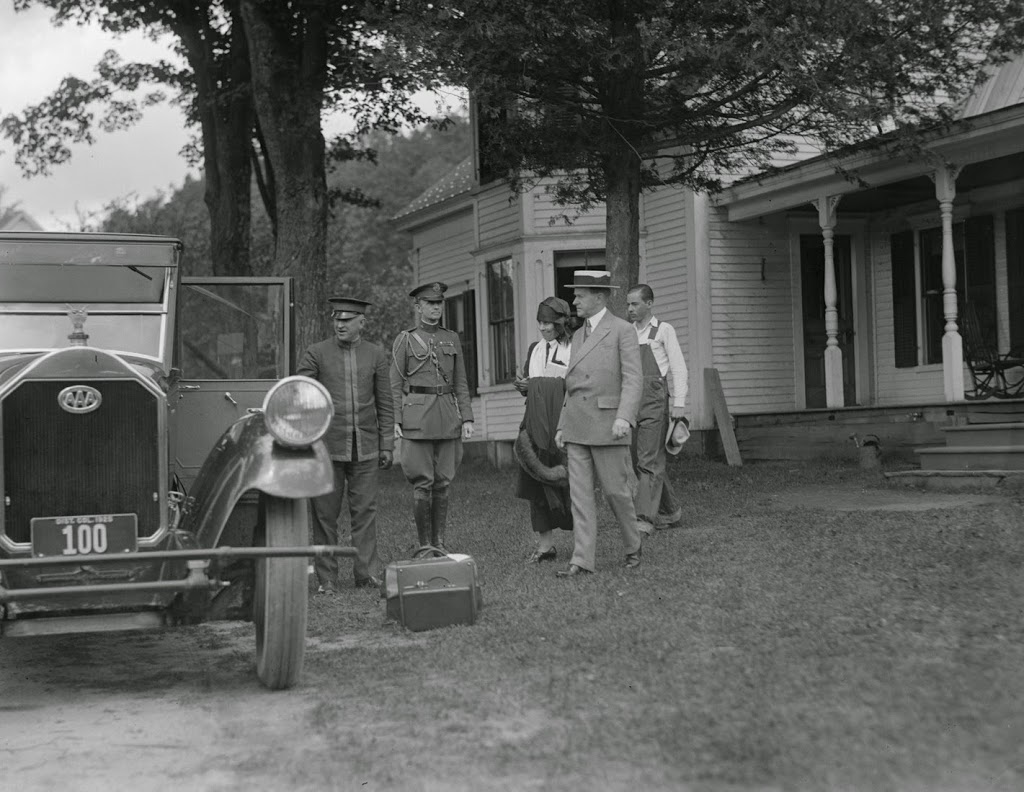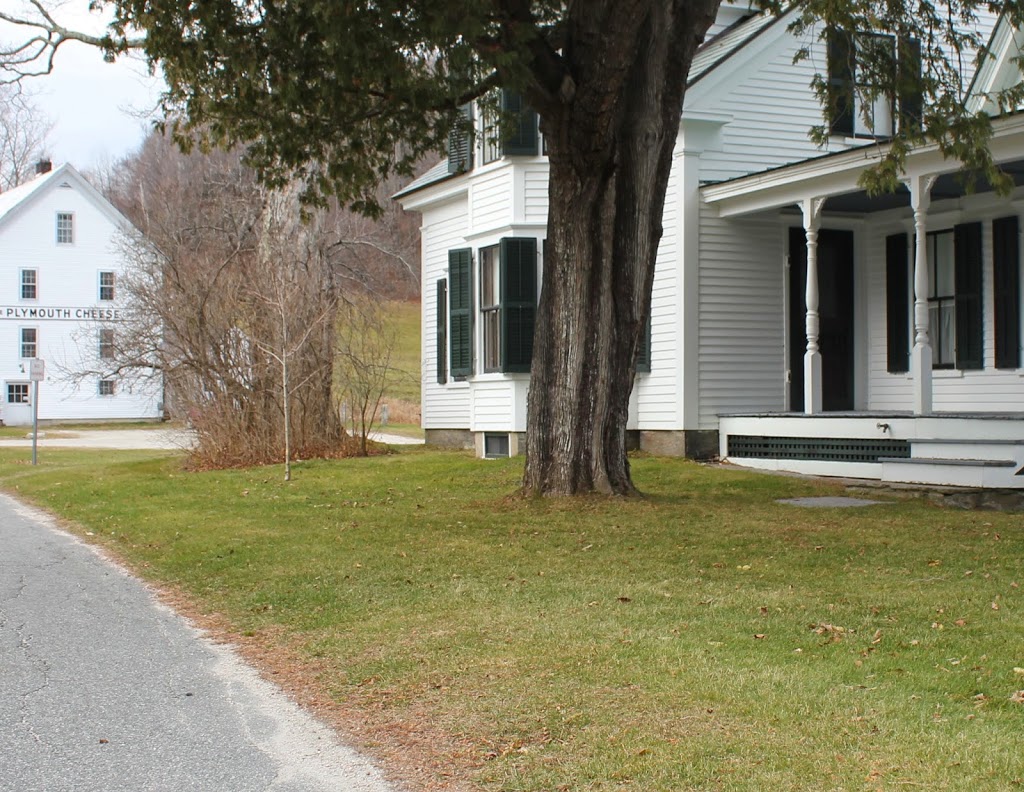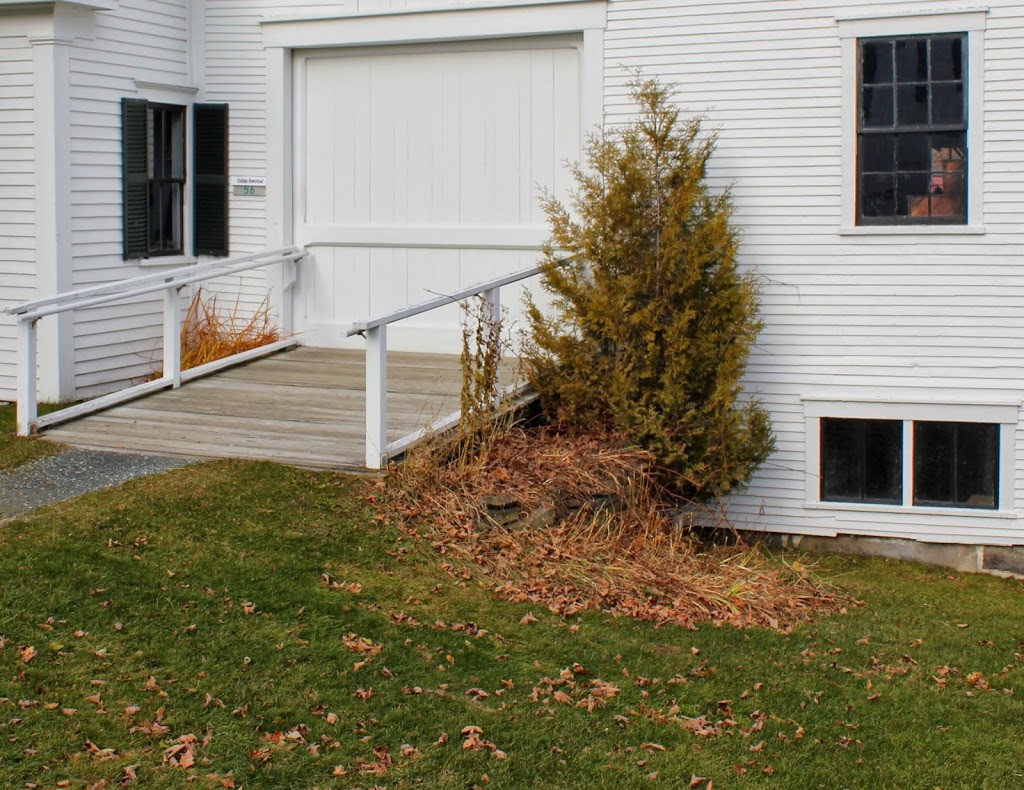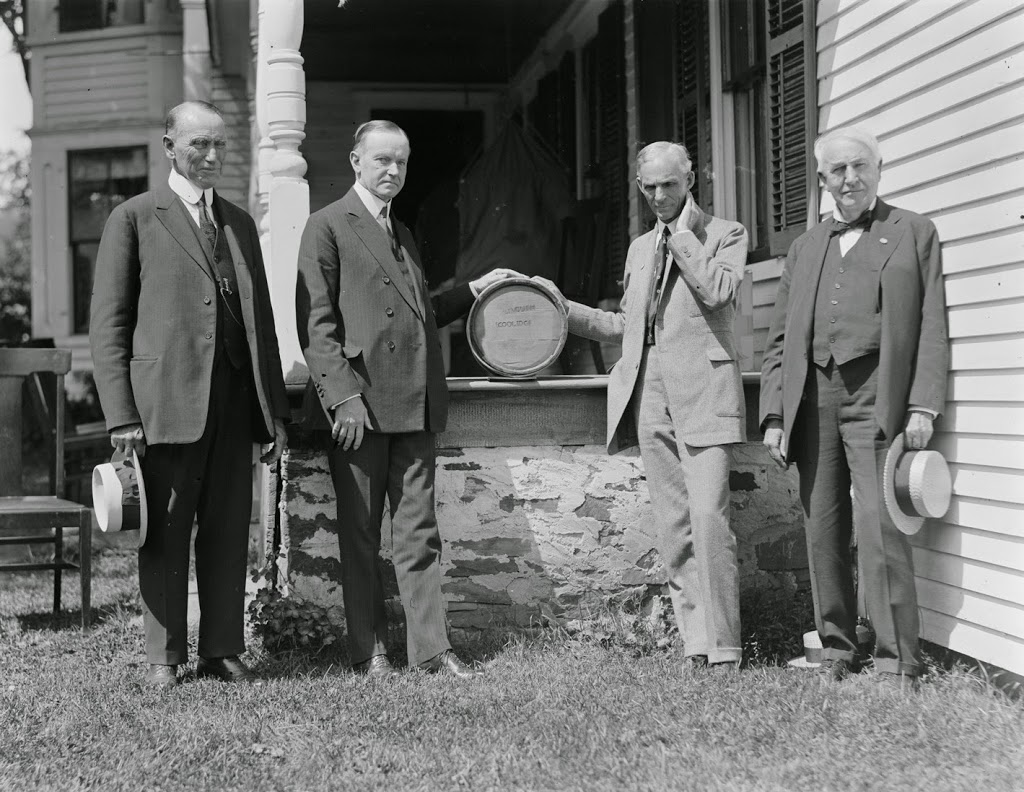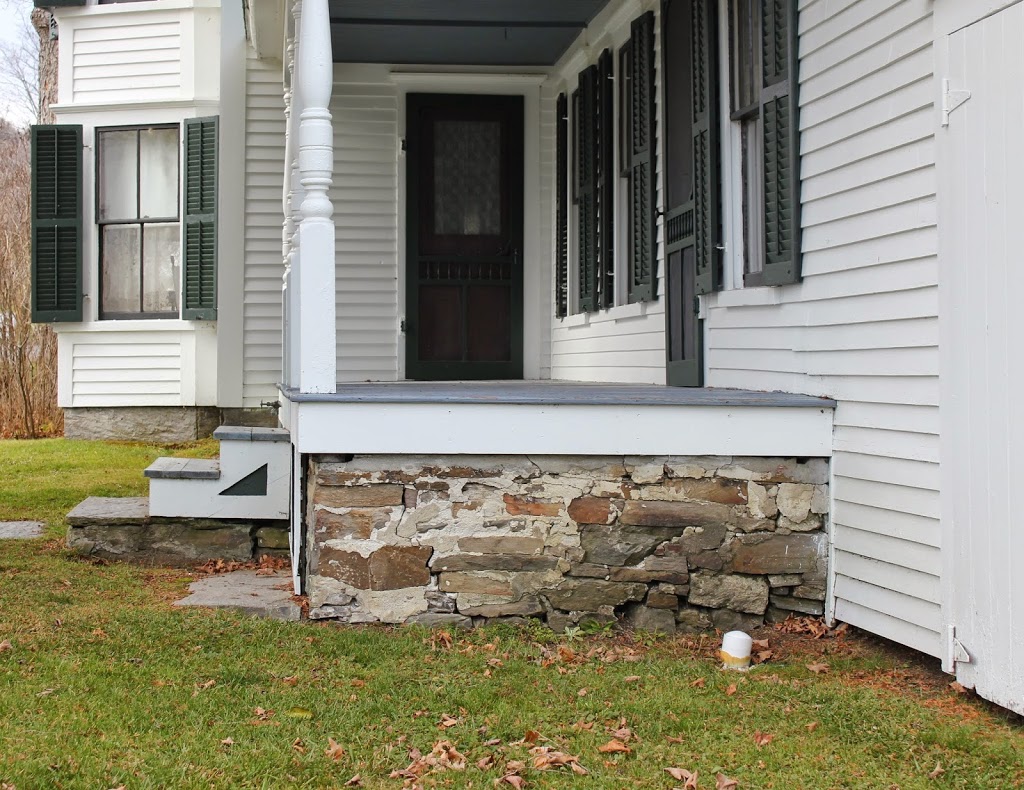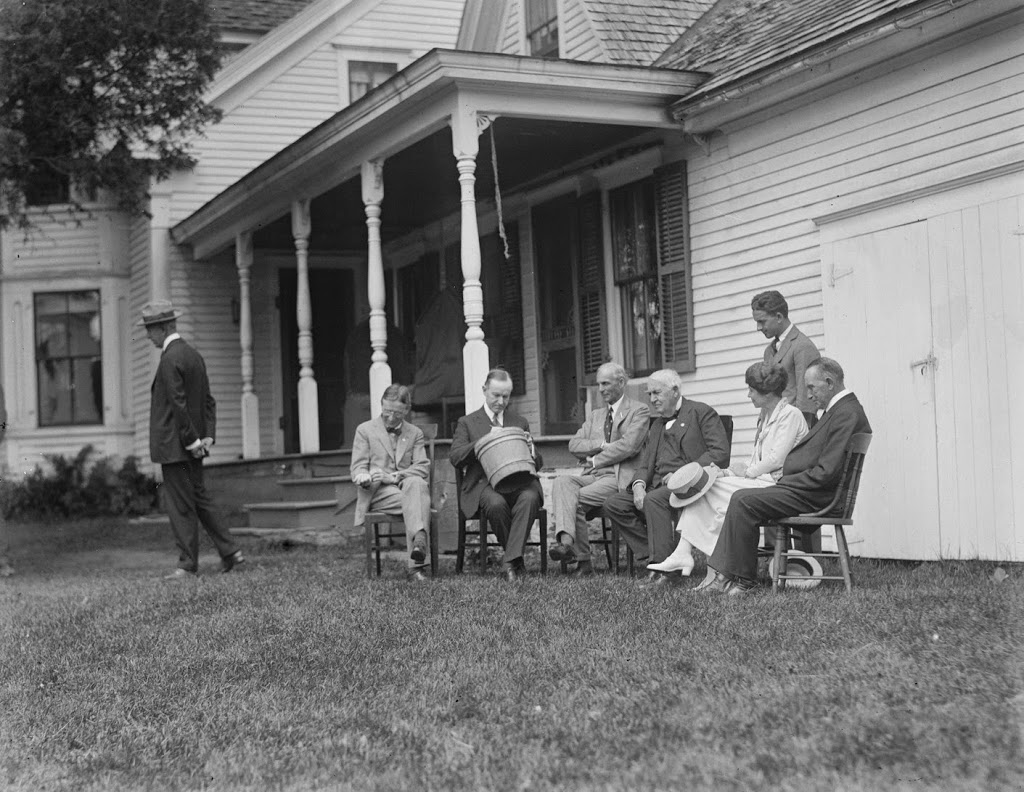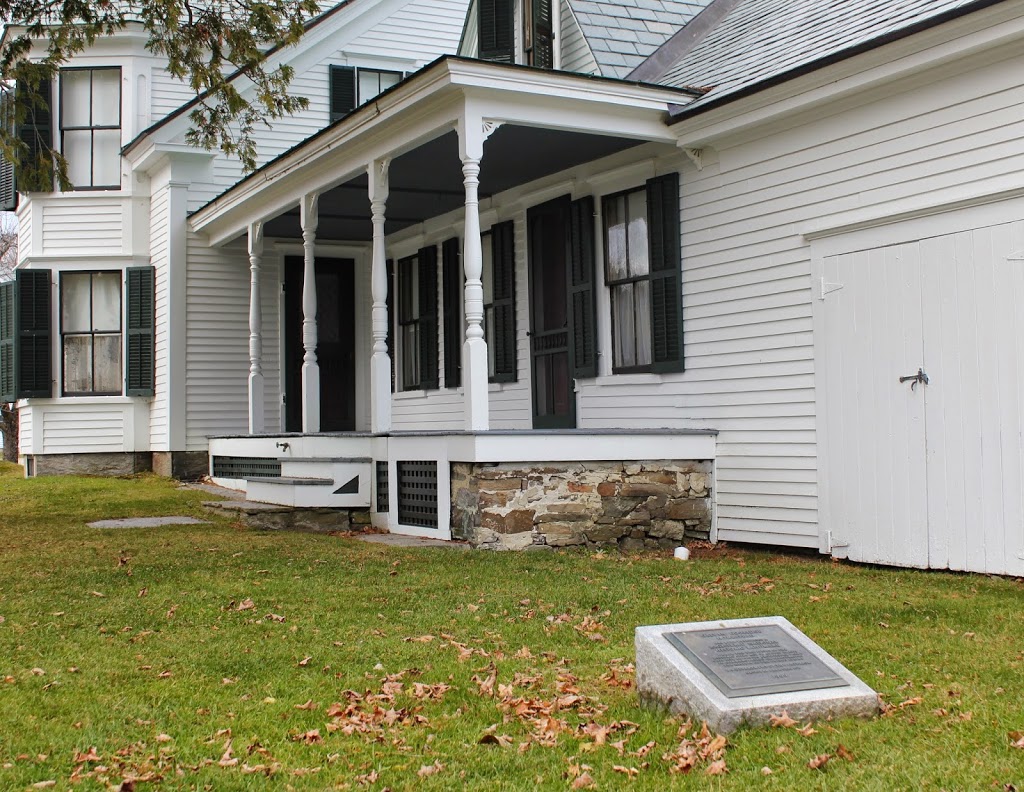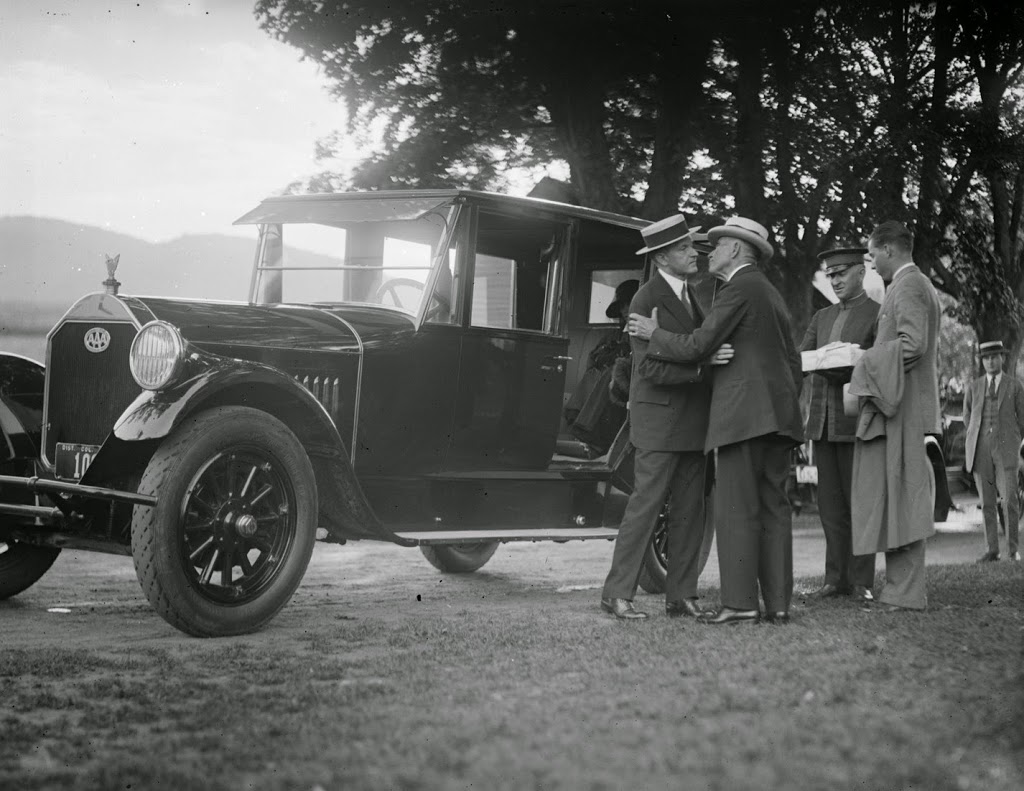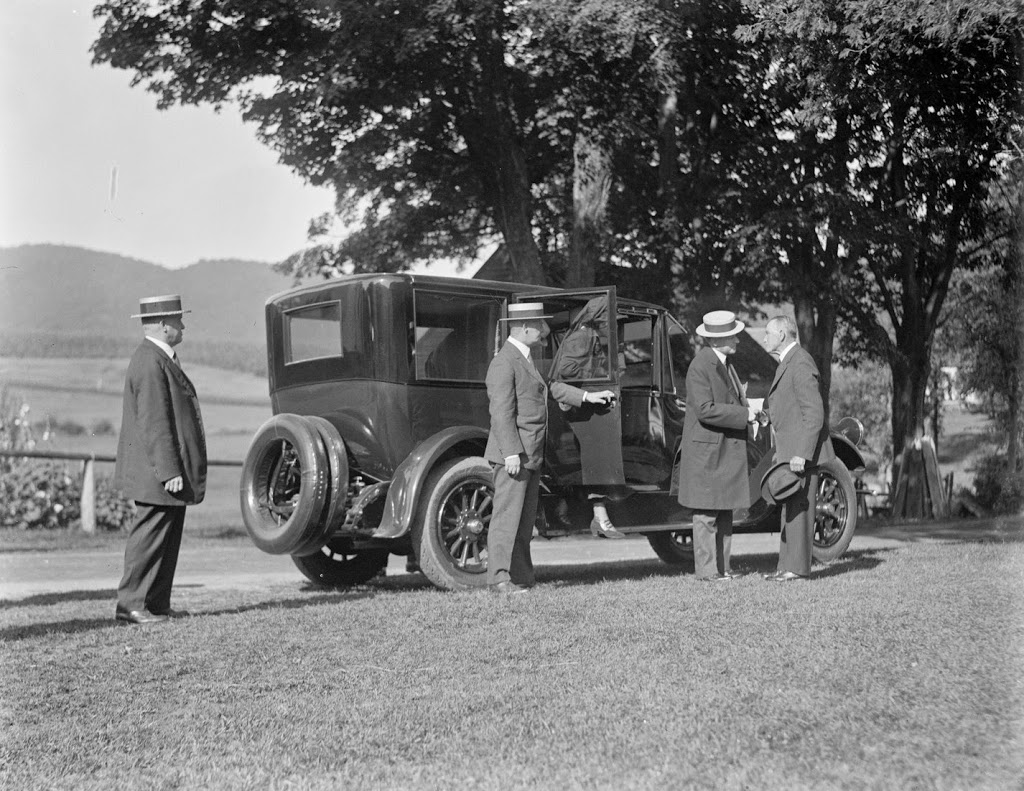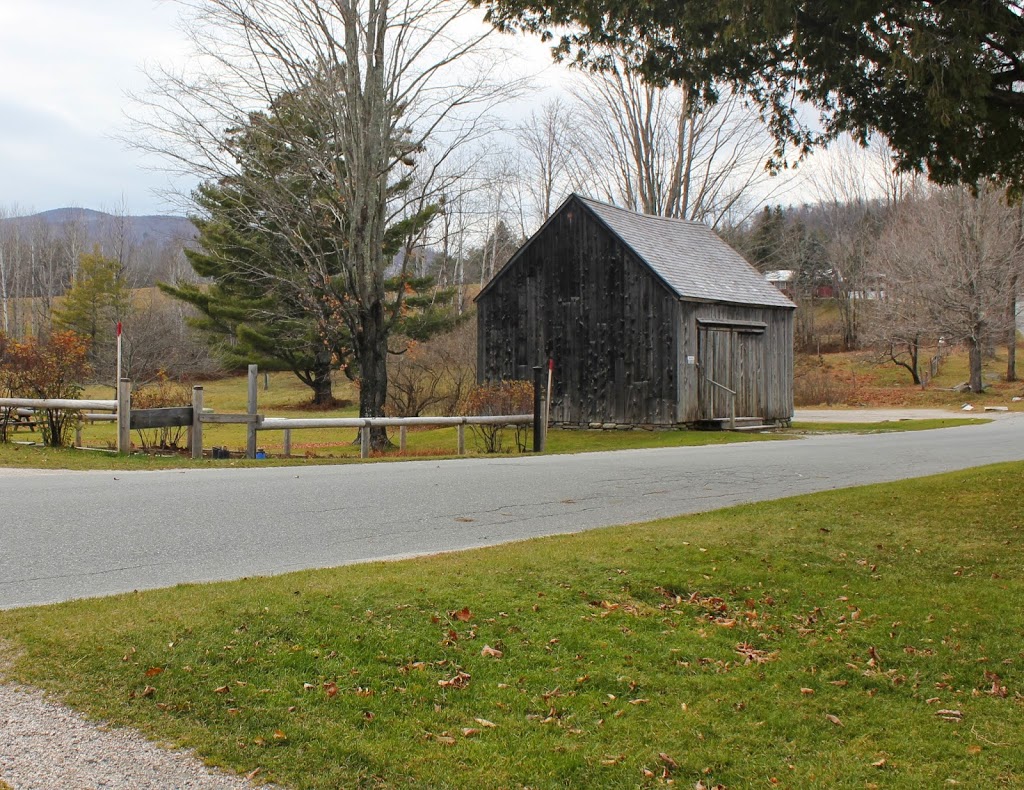Calvin, Grace, and John Coolidge at the Coolidge Homestead in Plymouth, Vermont, probably in August, 1924. Photo courtesy of Boston Public Library, Leslie Jones Collection.
The scene in 2014:
In the 1924 scene, President Calvin Coolidge and First Lady Grace Coolidge are walking toward their car, with their son John walking behind them. It’s the same car as the one in this post, but it doesn’t appear to be taken at the same time as that one, since all of them are wearing different clothing. I don’t know where they are heading, but probably not anywhere too formal, given that John is wearing overalls. Today, the scene hasn’t changed much, although sadly there are no antique cars parked in front of the house anymore.

